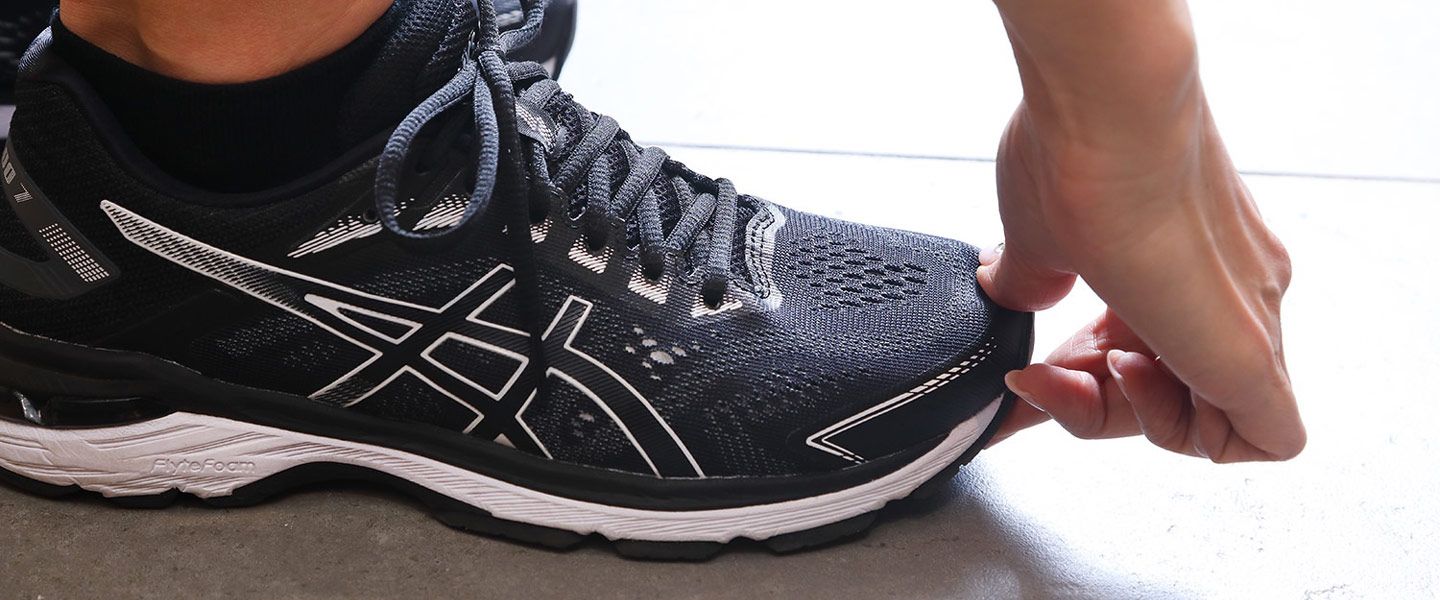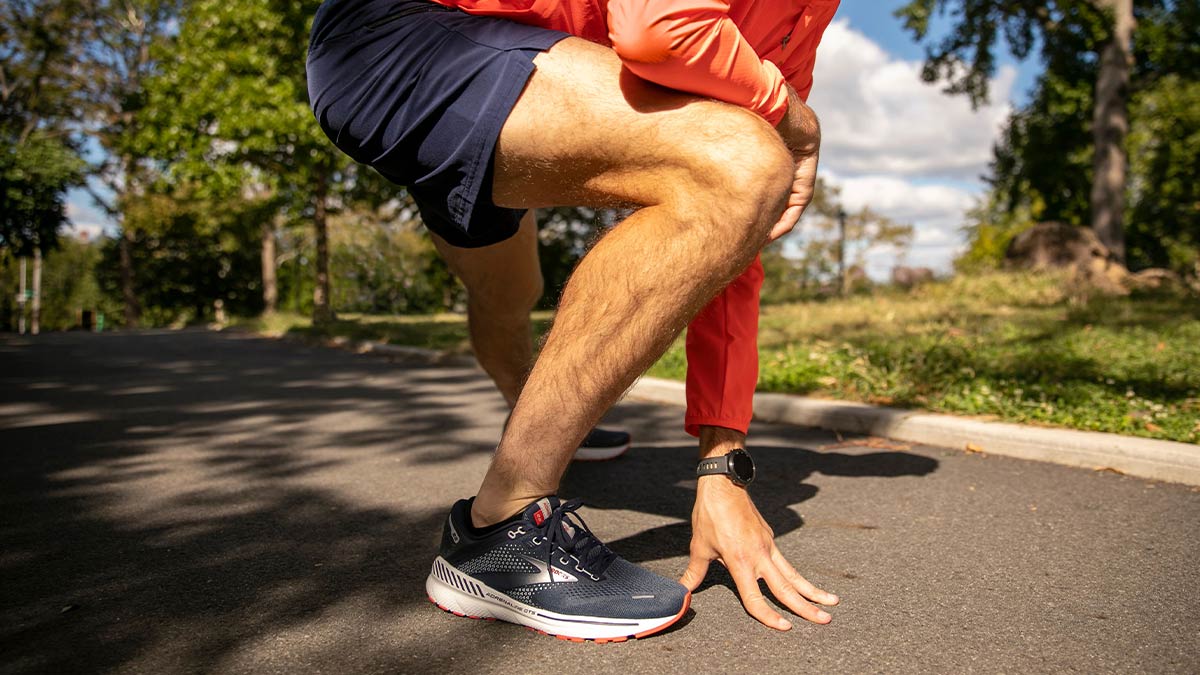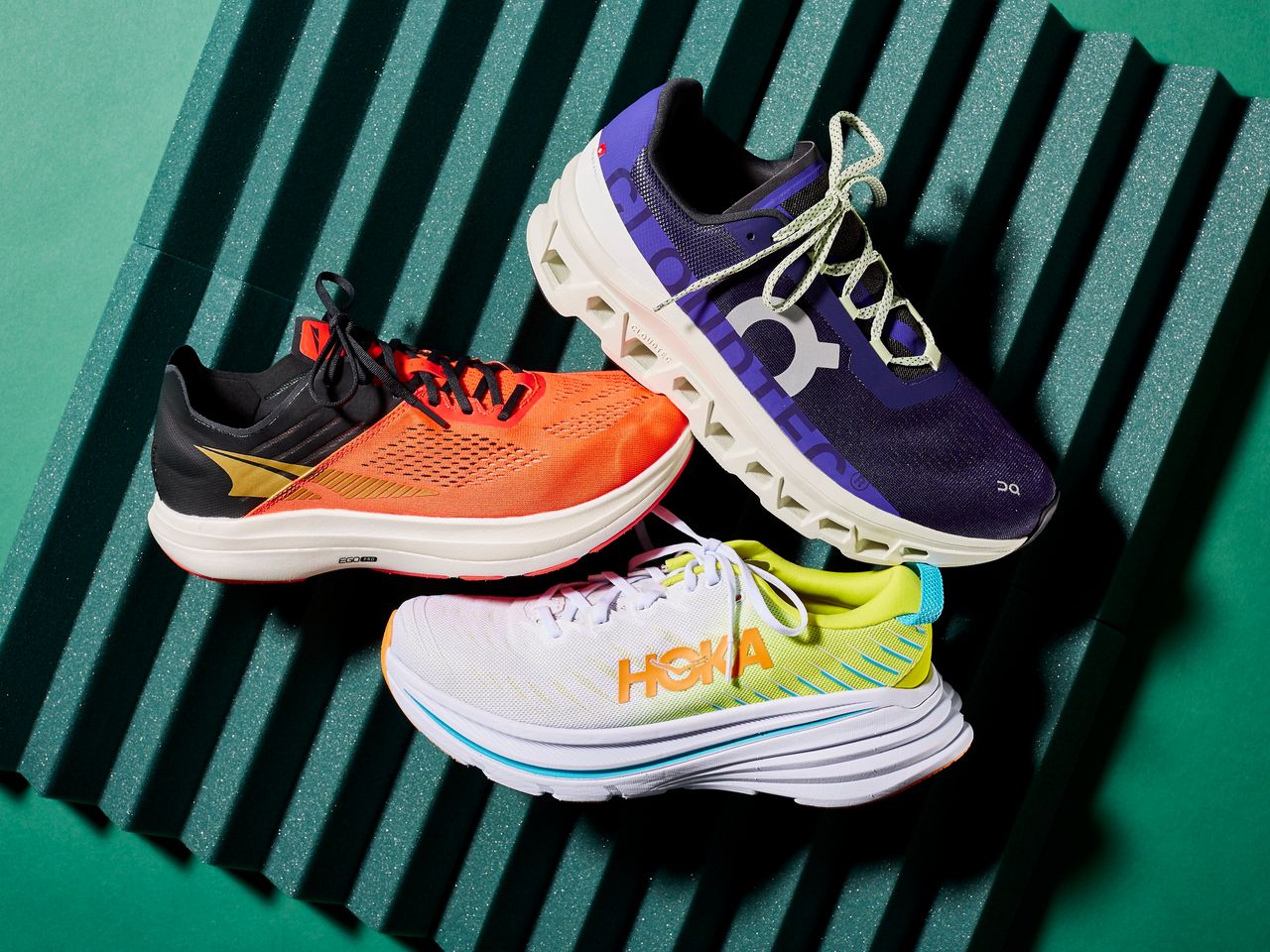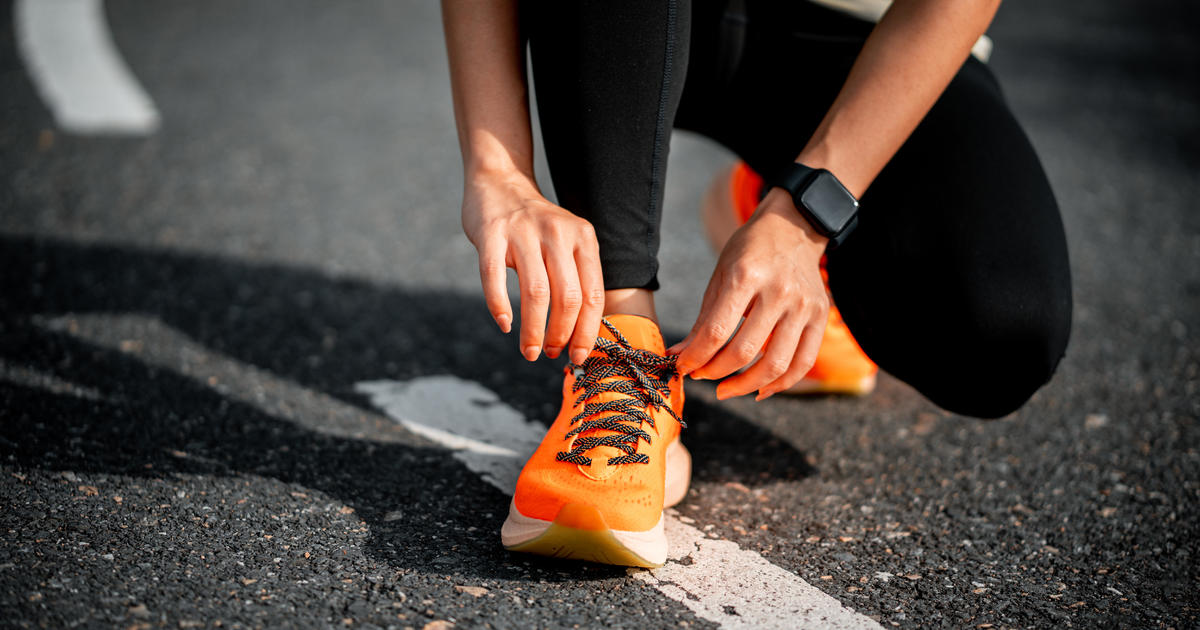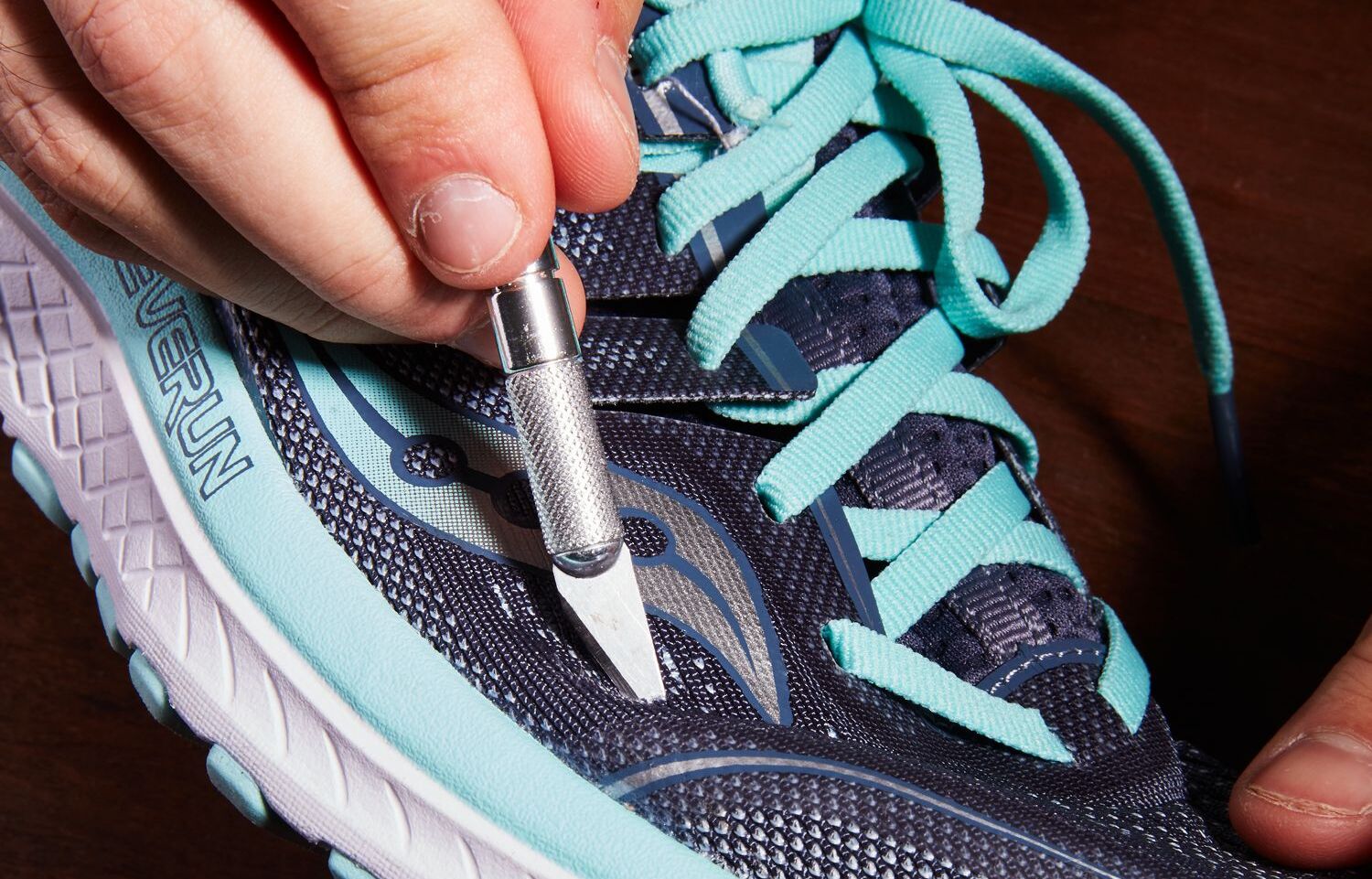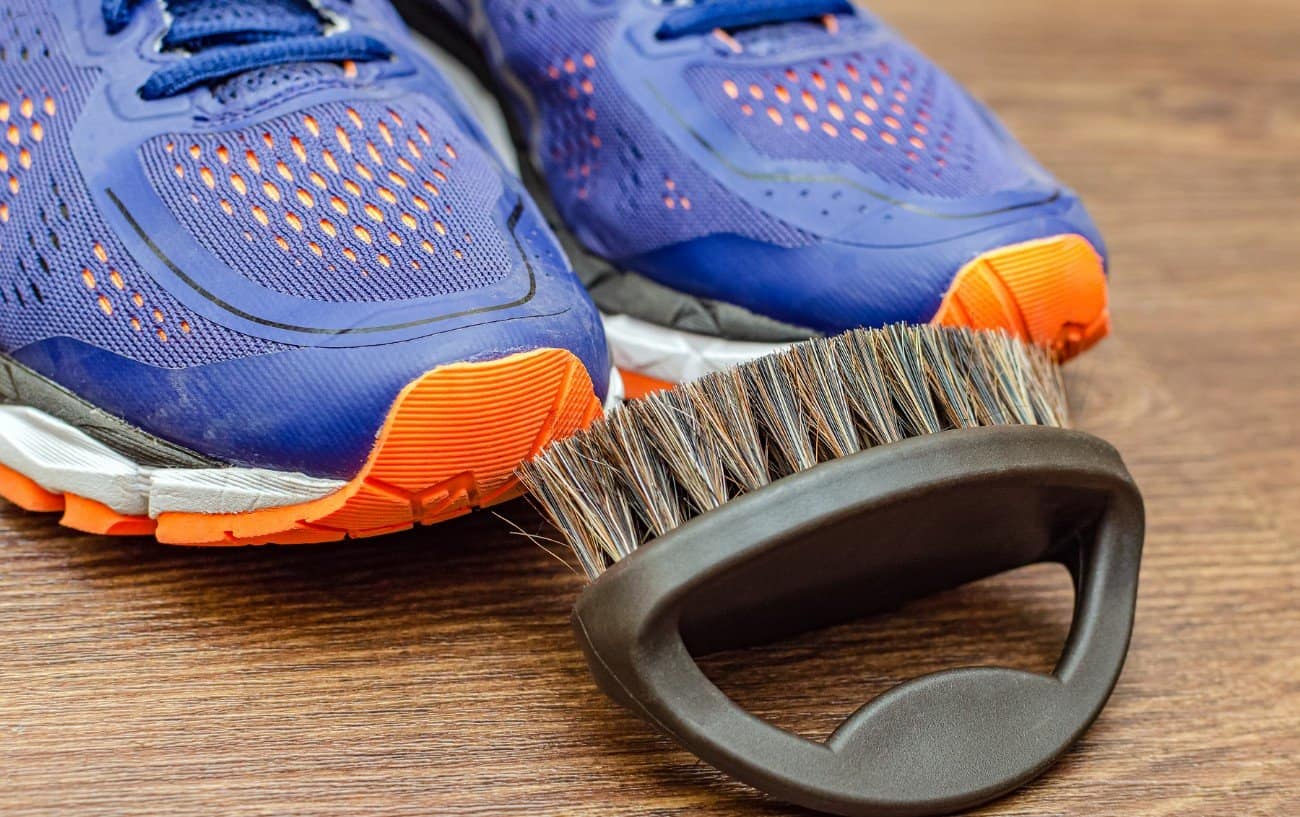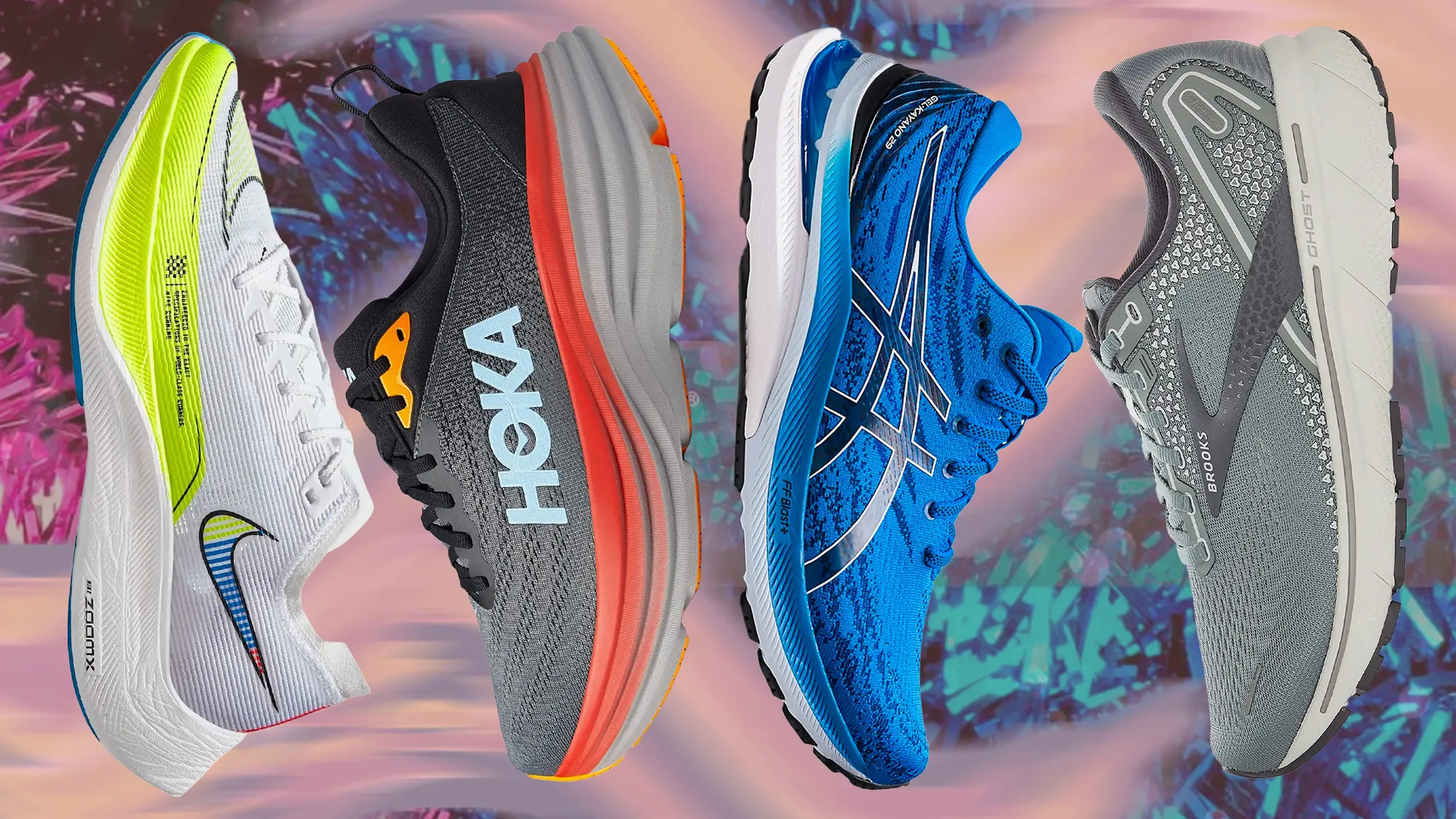Home>Misc>Featured>How To Find The Right Inserts For Your Running Shoes
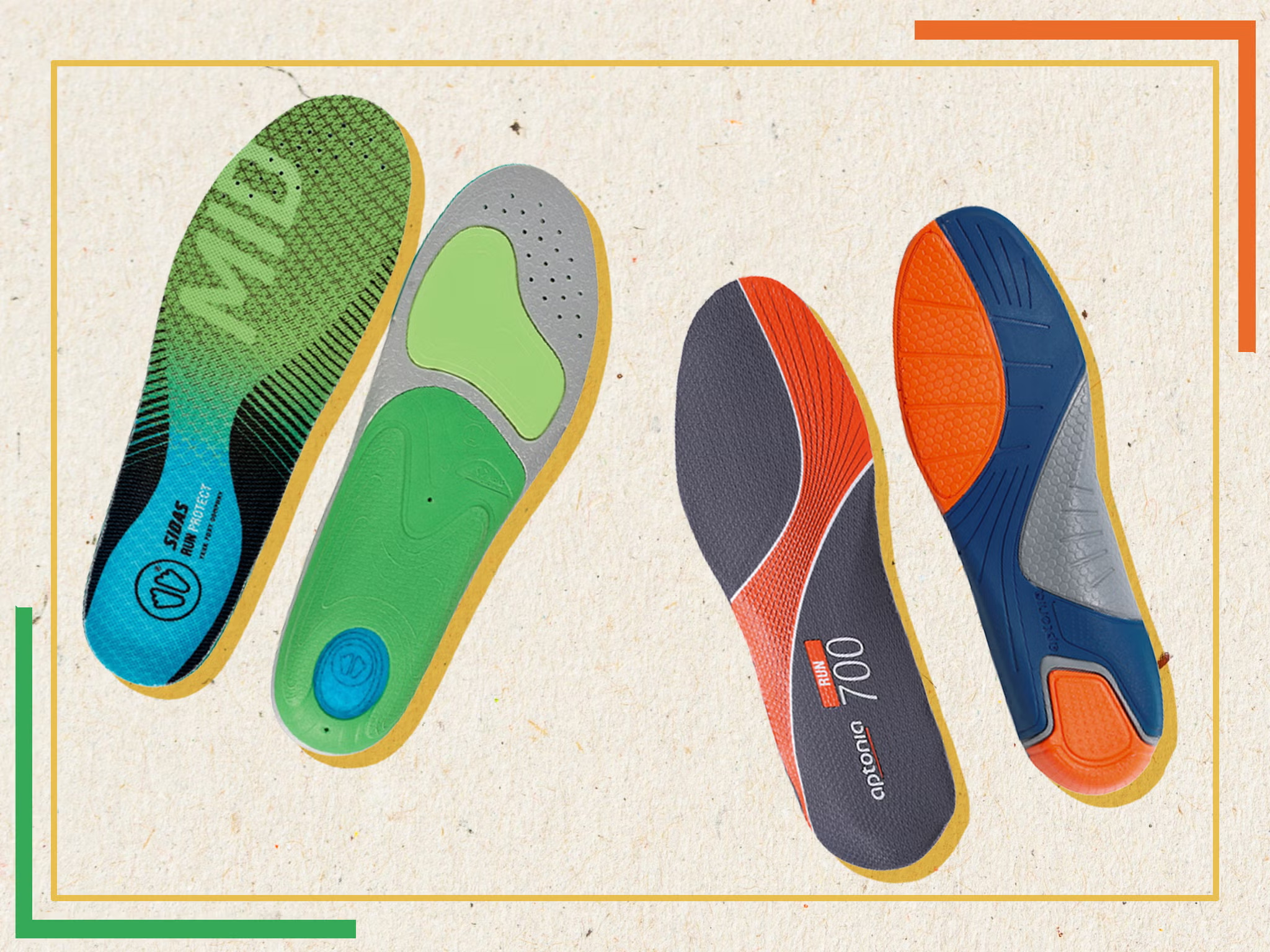

Featured
How To Find The Right Inserts For Your Running Shoes
Modified: January 22, 2024
Discover the best selection of featured inserts for your running shoes. Find the perfect fit and enhance your performance with our comprehensive guide.
Introduction
When it comes to running, having the right pair of shoes is essential for preventing injuries and maximizing performance. However, even with the best running shoes, some individuals may require additional support and cushioning. This is where inserts, also known as insoles or orthotics, come into play.
Inserts are removable footbeds that are designed to provide extra support, stability, and cushioning to the feet. They can be especially beneficial for runners who have high arches, flat feet, or specific foot conditions such as plantar fasciitis or pronation issues.
Choosing the right inserts for your running shoes can make a significant difference in your overall comfort and running experience. They can improve alignment, reduce pressure on certain areas of the foot, and help prevent common running injuries like shin splints and heel pain.
In this article, we will explore the importance of inserts for running shoes and guide you on how to find the right inserts for your specific needs. Understanding the different types of inserts, assessing your running style, and considering factors like arch type and professional guidance are vital steps in choosing the perfect inserts for your running shoes.
So, if you’re ready to enhance your running performance and take better care of your feet, let’s get started on the journey to finding the ideal inserts for your running shoes.
Importance of Inserts for Running Shoes
When it comes to running, the impact forces on our feet can be significant. These forces can lead to various issues such as foot pain, shin splints, and even stress fractures. Inserting the right type of inserts into your running shoes can play a crucial role in mitigating these problems and ensuring a comfortable and injury-free running experience.
One of the primary benefits of using inserts is their ability to provide added support and stability to the feet. They help distribute the weight and pressure evenly across the foot, reducing the strain on specific areas like the arches or heels. This even distribution of weight can prevent overpronation or supination, which can lead to imbalances and injuries.
Moreover, inserts can offer additional cushioning to absorb shock and impact forces while running. They can help reduce the pressure on the joints, muscles, and tendons, minimizing the risk of overuse injuries like plantar fasciitis or Achilles tendonitis. By absorbing shock effectively, inserts also help prevent fatigue and enhance overall running performance.
Another crucial aspect is the correction of foot alignment. Individuals with high arches or flat feet often face issues with their gait mechanics, which can contribute to injuries. Inserts with proper arch support can help align the foot and ankle, correcting the alignment and reducing the strain on the surrounding structures.
Furthermore, inserts can also address specific foot conditions. For example, if you have plantar fasciitis, inserts with built-in arch support and heel cushioning can provide pain relief and support the healing process. Similarly, individuals with metatarsalgia, a condition characterized by pain in the ball of the foot, can benefit from inserts that offer extra padding and support in that area.
In summary, inserts are not only about adding extra comfort to your running shoes; they play a vital role in maintaining foot health and preventing injuries. They offer support, stability, cushioning, and correction of alignment issues. By investing in the right inserts for your running shoes, you can enhance your running performance, minimize the risk of injuries, and enjoy a comfortable and pain-free running experience.
Understanding Different Types of Inserts
When it comes to inserts for running shoes, it’s important to understand that they come in various types, each designed to address different foot conditions and provide specific benefits. Let’s take a closer look at the different types of inserts available:
1. Cushioning Inserts: These inserts are primarily designed to provide extra cushioning and shock absorption. They are suitable for runners who require additional padding and support without significant foot or gait issues. Cushioning inserts are ideal for individuals with relatively neutral arches and no specific foot conditions.
2. Arch Support Inserts: These inserts are designed to provide support and stability to the arches of the feet. They are beneficial for individuals with low or fallen arches (flat feet) and those who experience overpronation. Arch support inserts help correct the alignment of the feet, reduce strain, and improve overall foot function.
3. Heel Cups/Heel Pain Inserts: These inserts are specifically designed to address heel pain, such as plantar fasciitis or heel spurs. They provide cushioning and support to the heel area, reducing pressure and absorbing shock. Heel cups are often made of materials like gel or silicone for optimal comfort.
4. Metatarsal Pads/Inserts: Metatarsal pads are inserts that target the ball of the foot. These pads provide extra cushioning and support to the metatarsal heads, helping to relieve pressure and alleviate pain associated with conditions like metatarsalgia or Morton’s neuroma.
5. Motion Control Inserts: Motion control inserts are designed for individuals with severe overpronation or flat feet. They provide maximum stability and control, limiting excessive movement of the foot and ankle. These inserts usually have a rigid construction and offer strong arch support to help correct overpronation.
It’s important to note that while understanding the different types of inserts is helpful, it’s equally important to choose the type that best suits your specific needs and foot condition. Consulting with a healthcare professional or a podiatrist is recommended to ensure proper diagnosis and selection of the right inserts for your running shoes.
Now that we have a better understanding of the various types of inserts for running shoes, let’s move on to the next section, where we will discuss the key considerations for choosing inserts that are tailored to your requirements.
Considerations for Choosing Inserts
Choosing the right inserts for your running shoes is not a one-size-fits-all process. To ensure maximum comfort and support, there are several key considerations to keep in mind. Let’s explore these considerations:
1. Running Style: Assessing your running style is crucial when choosing inserts. Individuals with a neutral gait may benefit from cushioning inserts to provide extra comfort and shock absorption. On the other hand, those with overpronation or supination may require motion control inserts to correct their foot alignment and stability during the running motion. Understanding your running style will help you determine the level of support and correction needed.
2. Arch Type: Knowing your arch type is essential as it can impact the choice of inserts. Flat-footed individuals may require arch support inserts to provide stability and prevent overpronation. Those with high arches may benefit from cushioning inserts to provide additional shock absorption. Understanding your arch type will help you choose inserts that suit your specific needs.
3. Foot Condition: If you have any existing foot conditions like plantar fasciitis, metatarsalgia, or heel pain, it’s important to consider inserts that specifically address these conditions. Inserts with built-in features like extra arch support, heel cups, or metatarsal pads can provide targeted relief and support for your specific foot condition.
4. Shoe Fit: The inserts you choose should fit properly in your running shoes without causing discomfort or altering the fit significantly. Inserts that are too large or bulky can lead to an improper fit and cause discomfort or blisters. Make sure to try inserts in your shoes and assess the fit before making a final decision.
5. Quality and Material: Consider the quality and material of the inserts. Look for inserts made from durable materials that provide long-lasting support and cushioning. Additionally, consider features like moisture-wicking properties to keep your feet dry and prevent odors.
6. Professional Advice: Seeking guidance from a healthcare professional, such as a podiatrist or orthopedic specialist, can be beneficial in selecting the right inserts. They can evaluate your foot structure, running style, and any specific foot conditions to provide personalized recommendations tailored to your needs.
By considering these factors, you’ll be better equipped to choose inserts that provide the right support, comfort, and correction for your running shoes. Remember, investing in high-quality inserts that meet your specific requirements is essential for maintaining foot health and maximizing your running performance.
Evaluating Your Running Style
Understanding your running style is a crucial step in choosing the right inserts for your running shoes. By evaluating how you run, you can identify any imbalances or issues that may affect your foot mechanics and determine the type of support your feet need. Here are some key factors to consider when evaluating your running style:
1. Pronation: Pronation refers to the natural inward rolling motion of the foot as it strikes the ground during the running stride. Evaluating your pronation type can help determine the level of support your feet require. You can do a simple self-assessment by examining the wear pattern on your old running shoes. If the wear is predominantly on the inside edge of the sole, it indicates overpronation. If it is on the outside edge, it suggests supination. If the wear is evenly distributed, you likely have a neutral pronation.
2. Gait Analysis: Performing a gait analysis can provide more in-depth insights into your running style. This can be done by visiting a specialty running store or seeking the assistance of a professional running coach. They will analyze your running form, foot strike pattern, and body alignment to determine any biomechanical issues. Based on the results, they can recommend the appropriate type of inserts to address any imbalances and optimize your running efficiency.
3. Biomechanical Assessments: If you have a history of recurring injuries or suspect underlying biomechanical issues, it is advisable to undergo a thorough biomechanical assessment. This involves a comprehensive evaluation of your joint motion, muscle function, and skeletal alignment. A podiatrist or physical therapist can perform this assessment and provide specific recommendations for inserts that address your unique biomechanical needs.
By taking the time to evaluate your running style, pronation type, and biomechanical factors, you can gain valuable insights into how your feet move during running. This knowledge will guide you in selecting inserts that provide the right level of support, stability, and correction for your specific running mechanics.
Remember, understanding your running style is not a one-time assessment. As you progress in your running journey and potentially make changes to your gait or stride, it’s essential to reassess your running style and make any necessary adjustments to your inserts.
Now that you have a better understanding of evaluating your running style, let’s move on to the next section, where we will delve into assessing your arch type and its impact on choosing inserts.
Assessing Your Arch Type
Understanding your arch type is an important consideration when choosing inserts for your running shoes. It can help determine the level of support and cushioning your feet require. Here are a few simple ways to assess your arch type:
1. Wet Test: The wet test is a popular at-home method for assessing your arch type. Start by wetting the sole of your foot. Then, step onto a piece of paper or a surface that will show your footprint. Examine the shape of your footprint:
- Flat Arch: If your entire foot appears on the paper, with little or no curvature visible on the inside arch, you likely have a flat arch.
- Normal/Medium Arch: If you see a moderate curve along the inside of your foot, with significant but not excessive space between the heel and the ball of the foot, you have a normal or medium arch.
- High Arch: If you see a distinct curve along the inside of your foot, with only a narrow strip connecting the heel and the ball of the foot, you likely have high arches.
2. Foot Analysis: Visiting a podiatrist or a specialty running store that offers foot analysis can provide a more precise assessment of your arch type. They may use advanced tools like a pressure plate or a foot scanner to measure the pressure points and identify any foot abnormalities.
3. Shoe Wear Patterns: Examining the wear patterns on your old running shoes can also offer some insights into your arch type. If the wear is primarily on the inside edge of the sole, it suggests overpronation and a need for additional arch support. If the wear is mostly on the outer edge, it may indicate supination, which requires cushioning and shock absorption.
Understanding your arch type is crucial because it directly influences the type of inserts that will provide the right support and stability for your feet. Flat-footed individuals may benefit from arch support inserts that help maintain proper alignment and prevent overpronation. Those with high arches may require inserts that offer more cushioning to absorb shock effectively.
It’s important to note that everyone’s feet are unique, and arch type is just one factor to consider when choosing inserts. Other factors such as running style, foot conditions, and shoe fit should also be taken into account to ensure the inserts meet your specific needs.
Now that you have assessed your arch type, let’s move on to the next section to discover the importance of seeking professional guidance when choosing inserts for your running shoes.
Seeking Professional Guidance
When it comes to choosing inserts for your running shoes, seeking professional guidance can provide invaluable insights and ensure that you make the right decisions for your feet. Here are some reasons why it’s beneficial to consult with a healthcare professional or a podiatrist:
1. Accurate Diagnosis: A healthcare professional can accurately diagnose any foot conditions or biomechanical issues that may require specific types of inserts. They can assess your feet, analyze your gait, and take into account any symptoms you may be experiencing. This expert evaluation will help guide the selection of inserts that address your specific needs.
2. Personalized Recommendations: Everyone’s feet are unique, and what works for one person may not work for another. By consulting with a professional, you’ll receive personalized recommendations tailored to your individual foot structure, running style, and any existing foot conditions. This ensures that you choose the inserts that are most appropriate for your specific requirements.
3. Expert Knowledge: Podiatrists and healthcare professionals have in-depth knowledge and expertise in foot biomechanics, anatomy, and common foot conditions. They keep up-to-date with the latest research and advancements in foot health. Their expertise allows them to provide accurate information, answer your questions, and guide you towards the best inserts for your running shoes.
4. Quality Assurance: Professional guidance ensures that you choose high-quality inserts from reputable manufacturers. Healthcare professionals have experience working with a variety of inserts and can recommend trusted brands that offer durable and effective products. This gives you peace of mind in knowing that you’re investing in inserts that will provide the support and cushioning your feet need.
5. Monitoring and Follow-up: If you’re dealing with a foot condition or recovering from an injury, seeking professional guidance allows for ongoing monitoring and follow-up. Healthcare professionals can track your progress, adjust treatment plans if necessary, and ensure that the inserts are effectively addressing your foot issues. They may also provide additional recommendations for exercises or stretches to aid in recovery.
Remember, seeking professional guidance doesn’t mean you have to make all your decisions based solely on their recommendations. It’s crucial to have open communication with your healthcare professional, discuss your preferences, and collaborate in choosing the inserts that align with your comfort and running goals.
In the next section, we will discuss the importance of trying out different inserts and finding the perfect fit for your running shoes.
Trying Different Inserts
Finding the right inserts for your running shoes often involves some trial and error. It’s important to keep an open mind and be willing to try different options to find the perfect fit. Here are a few reasons why trying out different inserts is crucial:
1. Comfort and Fit: Each runner has unique comfort preferences, and what works for one person may not work for another. Trying different inserts allows you to test and compare the comfort and fit of various options. Depending on your foot shape, arch type, and running style, you may find that certain inserts feel more comfortable and supportive than others.
2. Customization: Different inserts offer varying levels of arch support, cushioning, and stability. By trying out different options, you can customize the level of support and cushioning based on your specific needs. This customization ensures that you find the inserts that provide the optimal combination of comfort and performance.
3. Feedback and Adjustment: Trying different inserts allows you to provide feedback on their effectiveness. Pay attention to how the inserts feel during and after your runs. If you experience discomfort, pain, or a lack of support, it may be an indication to try a different insert or make some adjustments. You can share this feedback with a healthcare professional who can guide you in choosing alternative options or making necessary modifications.
4. Adaptation Period: It’s important to remember that your feet may need some time to adjust to the new inserts. Give yourself an adaptation period to allow your feet, muscles, and joints to acclimate to the inserts. Be patient and gradually increase the duration and intensity of your runs while wearing the new inserts. This will give you a better understanding of how they perform over time.
5. Changing Needs: As your running style, fitness level, or foot conditions evolve, your needs for inserts may change as well. By periodically trying different inserts, you can reassess your requirements and ensure that you have the right support and comfort for your current running needs.
Remember, the goal is to find the inserts that work best for you. Don’t be discouraged if it takes some experimentation to find the perfect fit. By trying different options, you increase your chances of discovering the inserts that enhance your running experience and help prevent injuries.
In the next section, we will wrap up our discussion on finding the right inserts for your running shoes.
Conclusion
Choosing the right inserts for your running shoes plays a crucial role in enhancing your comfort, support, and overall running experience. By understanding the different types of inserts, evaluating your running style, assessing your arch type, seeking professional guidance, and trying out different options, you can find the inserts that best meet your specific needs.
Inserts provide additional support, cushioning, and correction to help prevent injuries, alleviate foot conditions, and optimize your running mechanics. Whether you require arch support, cushioning, motion control, or targeted pain relief, there are inserts available to address your unique requirements.
When evaluating your running style, consider factors such as pronation, gait analysis, and biomechanical assessments to gain valuable insights into your foot mechanics. Assessing your arch type will help you choose inserts that provide the right level of support and stability for your feet.
While it’s essential to consider your own preferences and comfort, seeking professional guidance from a healthcare professional or podiatrist can provide expert advice, personalized recommendations, and ensure accurate diagnosis and treatment of any foot conditions or issues you may have.
Remember, finding the right inserts may involve some trial and error. Don’t hesitate to try out different options, provide feedback on their performance, and make adjustments as needed. Everyone’s feet are unique, and what works for one person may not work for another.
By investing time and effort into finding the right inserts, you can optimize your running performance, minimize the risk of injuries, and maintain foot health. So, lace up your running shoes, insert those perfect inserts, and hit the road with confidence!

